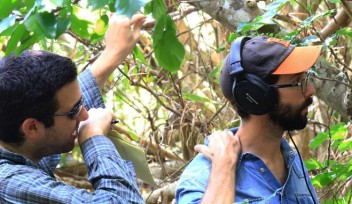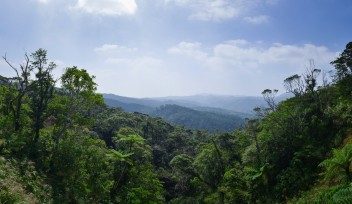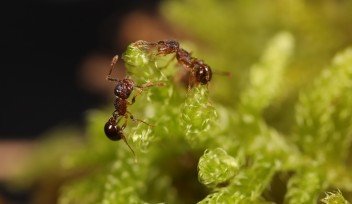Acoustic monitoring shows surprising resilience of subtropical forests to extreme weather – but climate change looms
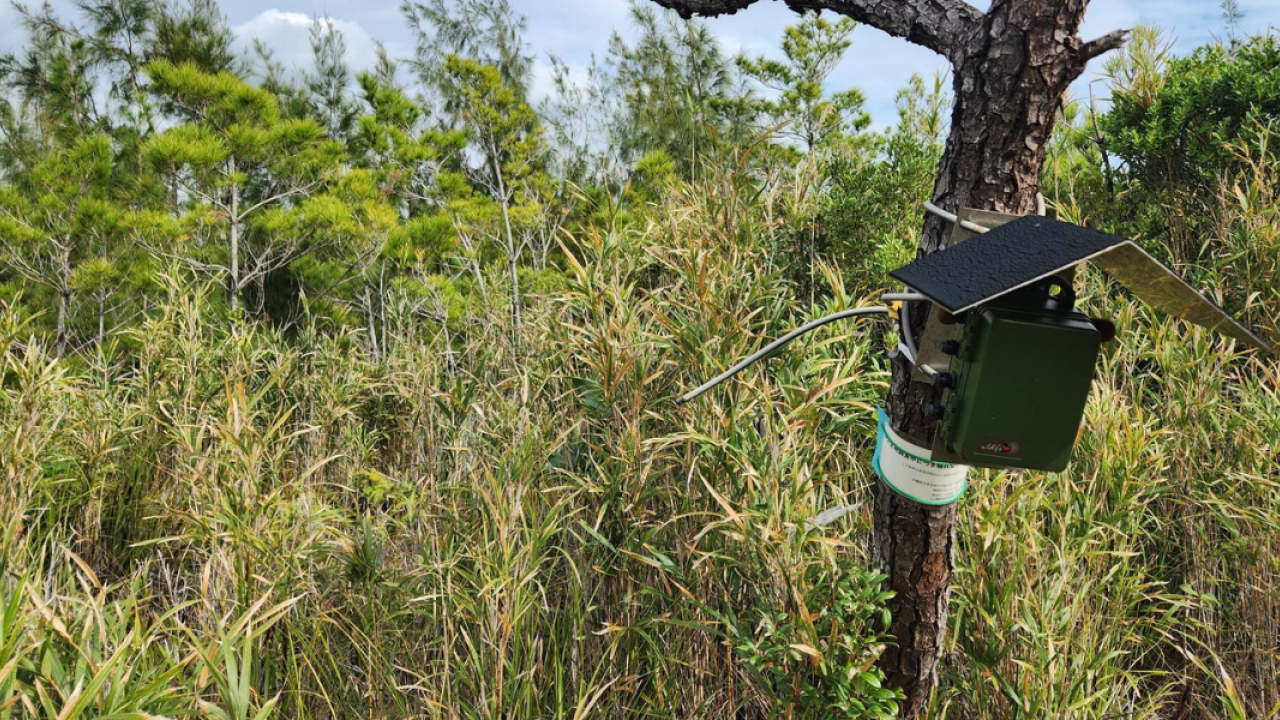
If a tree falls in a forest, and no one is around to hear it, does it make a sound? Researchers from the Okinawa Institute of Science and Technology Graduate University (OIST) have answered this question by remotely recording the soundscapes of Okinawan forests, allowing them to track how extreme weather events like typhoons affect different ecosystems on the island. Overall, they found that the forests were surprisingly resilient – and the soundscapes offer a powerful way to glean crucial information that can guide conservation efforts.
In September 2018, super-typhoon Trami shook Okinawa, and six days later came the slightly less severe typhoon Kong-Rey. To probe the true extent of the damage these storms caused to local wildlife, researchers from OIST and Trinity College Dublin analyzed 13,000 hours of audio from soundscapes collected before, during, and after the typhoons.
The soundscapes were collected as part of the Okinawa Environmental Observation Network (OKEON) Churamori Project, which includes an acoustic monitoring network spanning 24 sites across the island of Okinawa, from the untouched forests in the north to the urban sprawl of the south. OKEON depends on close collaboration between researchers, local experts and institutions in Okinawa, and citizen scientists.
“Working with huge acoustic datasets from natural ecosystems gives a more holistic view of real-world responses to disturbance, which are difficult to observe using theory or laboratory experiments,” says Dr. Samuel Ross from the Integrative Community Ecology Unit at OIST and lead author of the study, which was published in Global Change Biology.
By converting the recordings to numerical data, the researchers were able to detect the overall level of animal sound—the so-called biophony—at each of the 24 sites. They also used supervised machine learning to rapidly identify the bird calls of three Okinawan bird species, which made it possible to track their presence through time and space.
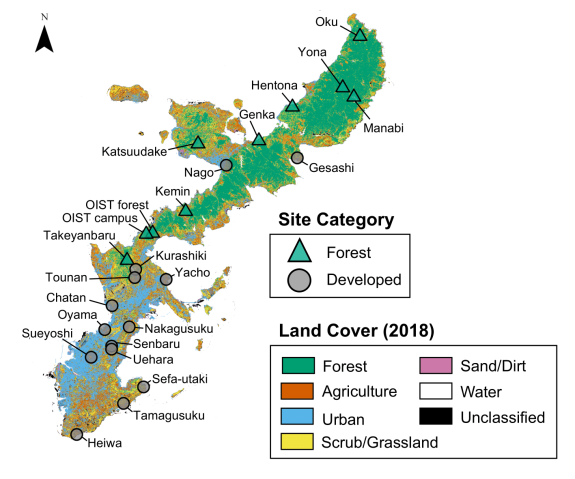
Despite the relatively small size of the island, environments across Okinawa reacted very differently to these massive weather disturbances. “We expected that the ecosystems would respond in the same way to the typhoons, but surprisingly, we got the complete opposite result,” says Dr. Ross.
Instead of typhoons destroying habitats and quietening wildlife, the microphones picked up different numbers of bird calls at the various field sites. Human development didn’t seem to account for the different responses either. “We were surprised by how resilient the developed sites were,” Dr. Ross explained. “We expected that sites where humans have altered the structure of ecosystems would be more vulnerable.”
That resilience may not hold, however. Climate change is bringing larger, longer lasting, and more frequent typhoons that hit further inland. Super-typhoons like Trami used to be very rare, but in August 2023, another one struck. “Ecosystems in Okinawa may be pre-adapted to extreme weather to some degree, which might explain the resilience of these ecosystems to typhoons, but climate change could push these ecosystems to their limit,” says Dr. Ross. “If you hit an ecosystem over and over again with extreme disturbances, eventually there comes a point where it can't take anymore.”
Acoustic monitoring networks such as the OKEON sensor array offer an alternative to costly and labor-intensive traditional ecological monitoring. This approach can also yield targeted recommendations for local conservation efforts in vulnerable areas. The study tracked the calls of three bird species: the large-billed crow, the Ryukyu scops-owl and the Japanese bush warbler. While the crow and the scops-owl resisted the extreme weather events, the number of bush warbler calls diminished, suggesting this bird struggled after the typhoons. With this knowledge, ecosystem managers in Okinawa could focus their conservation efforts on the species worst affected by natural disasters.
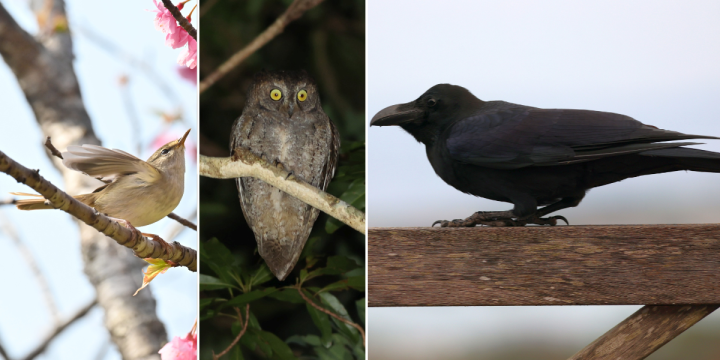
Article Information
Specialty
Research Unit
For press enquiries:
Press Inquiry Form











